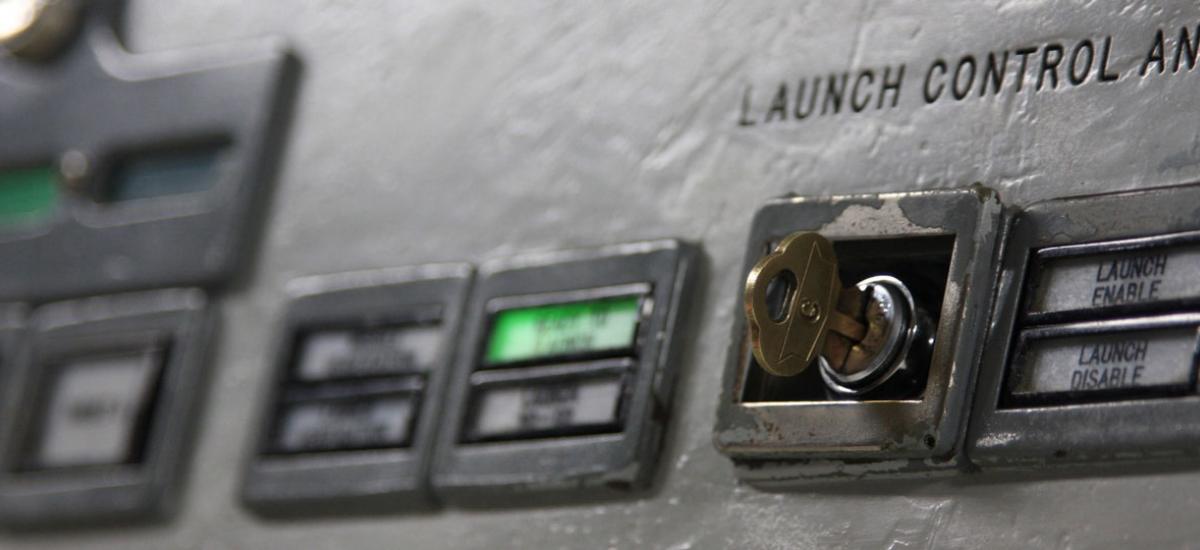Nuclear weapons of the US and adversaries remain on “high alert”. The Union of Concerned Scientist address the risks, as the United Nations Non-Proliferation Review Conference concludes in disarray…
5 Yr Conference Ends Without Statement
June 1, 2015 / For most of May, the 189 nations that have signed the Nuclear Nonproliferation Treaty (NPT) held their every-five-year conference to review how the treaty is doing. The conference ended without a closing statement.
The media focused on the most dramatic reason for that failure, a complex set of maneuvers around a possible conference to discuss a WMD-free zone in the Middle East
Washington Post, AP, Reuters, Bloomberg, NY Times
Open Split Between the US and Russia
Increasing Tension Between the US and China
Nuclear Modernisation by the US / Reaching Critical Will
2015 NPT Review Conference Summation / Reaching Critical Will
NPT Review Conference: No Document Better Than a Weak One
○ ○ ○ ○ ○ ○ ○ ○ ○ ○ ○ ○ ○ ○ ○ ○ ○ ○ ○ ○ ○ ○ ○ ○ ○ ○ ○ ○ ○ ○ ○ ○
Arms Control Wonk on Conclusion of RevCon III — Gaukhar Mukhatzhanova / Director of International Organizations and Nonproliferation Program at Monterey CNS
The NPT Review Conference’s last week was devoted to last-ditch and closed-door negotiations to formulate different parts of the draft final text. A group of about 20 states was negotiating on disarmament, while chairs of Main Committees II and III were leading attempts to agree on nonproliferation, safeguards, nuclear security, export controls, response to withdrawal, and other issues. Neither the disarmament group nor any of the committees could reach consensus…
Where does it all leave us on the Middle East WMD-free zone? It might well be back to the drawing board now, to the 1995 Middle East Resolution…
The one important area where the document urged the NWS (Nuclear Weapons States) to act was in addressing the risks of accidental use of nuclear weapons…
Hair-Trigger “launch-on-warning Debate Escalates
NPT Brief: Keeping Chinese Nuclear Weapons Off of Hair-Trigger Nuclear Alert
An overwhelming majority of NPT member states agree that keeping nuclear weapons on hair-trigger alert presents an irresponsibly high risk of an accidental or mistaken launch. The final report of the last NPT review conference, held in 2010, included a requirement to lower alert levels. [At the current 2015 NPT review conference] the United States is doing its best to make sure that requirement is stripped from the final language of the 2015 report, despite the wishes of many close U.S. allies…
United States rejects “launch-on-warning policy”
On Tuesday, the U.S. delegation to the 2015 Nuclear Non-Proliferation Treaty (NPT) Review Conference in New York issued a statement on the alert level of U.S. nuclear weapons…
In rejecting the term “hair-trigger” alert, the administration’s statement implicitly denies that the United States keeps its missiles on high alert. This is false: the United States can launch hundreds of its nuclear weapons in minutes. Moreover, “hair-trigger alert” is a widely-used term to describe this practice. Presidents Bush and Obama have used the term, as have many high-ranking U.S. military officers.
The U.S. statement also rejects the term “launch-on-warning policy.” But the fact is that the United States maintains the option of launching its missiles when warning sensors indicate an attack is underway. A false or misinterpreted warning could lead to a deliberate but mistaken launch of U.S. missiles. This is not just a theoretical possibility—human and technical errors have led to false warnings in the past.
What the U.S. statement omits is as important as what it says. It notes that the United States has taken steps to reduce the risk of an accidental or unauthorized launch of nuclear missiles. But it fails to note that these safeguards do nothing to prevent a mistaken launch; they are not intended to prevent a launch authorized by the president.
The U.S. statement points to the fact that all U.S. nuclear-capable bombers have been taken off day-to-day alert. It is important to note, however, that it was President George H.W. Bush who took this step using his executive authority almost 25 years ago. And while the United States has reduced the overall number of nuclear warheads on alert—by reducing the number of warheads on land-based missiles and on submarines at sea—hundreds of warheads remain at the same alert level they were during the Cold War, ready to be launched in minutes.
Rather than arguing about how to refer to the hundreds of nuclear-armed missiles that it keeps ready to launch within minutes, the United States should eliminate this dangerous practice.
Ⅰ Ⅱ Ⅲ Ⅳ Ⅴ Ⅵ Ⅶ Ⅷ Ⅸ Ⅹ Ⅺ Ⅻ
The International Panel on Fissile Materials has proposed a step-by-step program for weapon states to declare their inventories, production histories, and disposition of nuclear warheads and fissile materials, and to set up joint projects to develop methods for verifying these declarations.
The openness initiative described here failed to be adopted at the 2015 NPT Review Conference…
The final statement of the conference, calling for nonproliferation in the Middle East, was blocked by the US, UK and Canada.
Nonproliferation Review — Confronting the “Perpetual Menace to Human Security”




